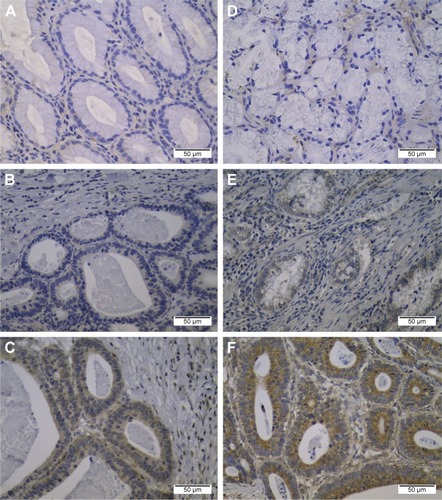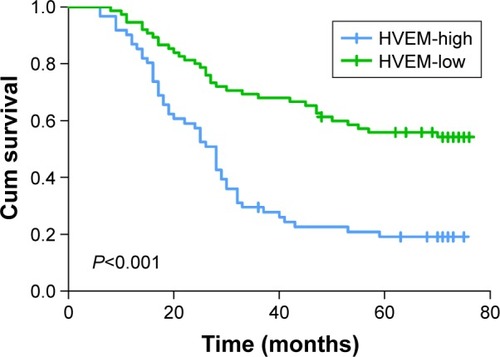Figures & data
Figure 1 Representative picture of immunohistochemical staining of BTLA and HVEM in gastric tissues.
Abbreviations: BTLA, B- and T-lymphocyte attenuator; HVEM, herpesvirus entry mediator.

Table 1 Association between BTLA and HVEM expression and clinicopathological factors of gastric cancer patients
Table 2 Relationship between BTLA and HVEM expression in gastric cancer
Figure 2 Kaplan–Meier curves of OS based on BTLA expression in patients with gastric cancer.
Abbreviations: OS, overall survival; BTLA, B- and T-lymphocyte attenuator; Cum, cumulative.

Figure 3 Kaplan–Meier curves of OS based on HVEM expression in patients with gastric cancer.
Abbreviations: OS, overall survial; HVEM, herpesvirus entry mediator; Cum, cumulative.

Table 3 Univariate and multivariate analysis of the prognostic factors in 136 patients with gastric cancer
